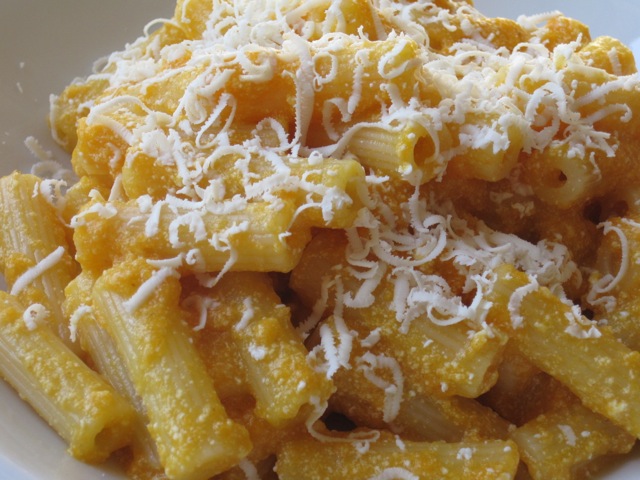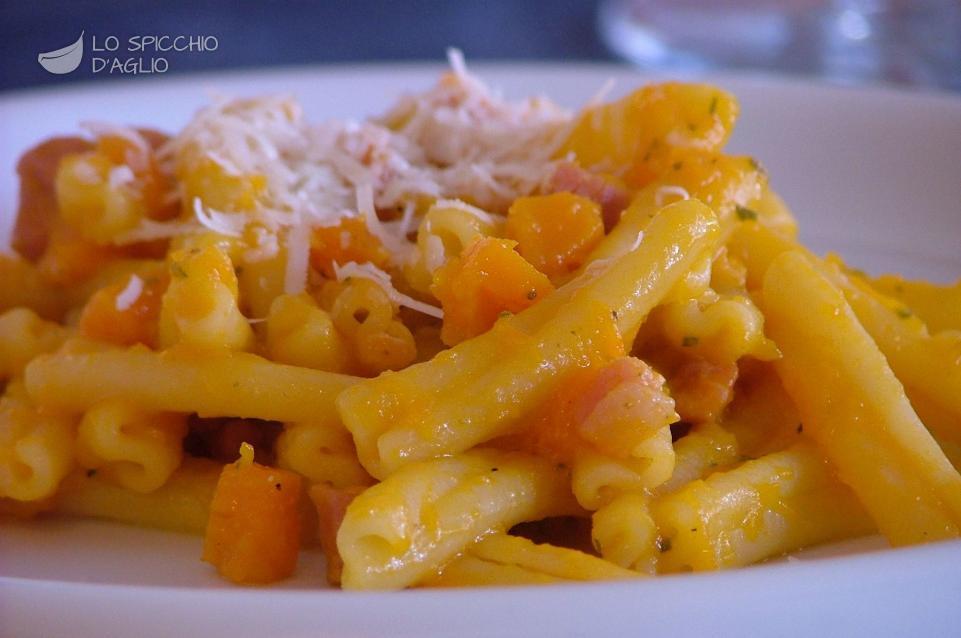Stewed or fresh, tomatoes are the base of many Italian meals. When you travel through Italy, you'll quickly spot paler plates of pasta. Sicilians
toss spaghetti with fresh sardines, pine nuts and raisins. Calabria's cooks
squeeze a sauce from wild fennel and local chilis. In the north, ravioli swim in cream and bitter radicchio. Tomatoes are just one
condimento, among many, for pasta.
 |
| Fresh tortellacci served with radicchio, parmesan and cream. Photo. |
In Emilia-Romagna's kitchens, sage and butter often crown the region's yolk-yellow noodles. A few years ago, I lived in Bologna -- home to leftist politics, Europe's oldest university and the country's best fresh pasta. My friend Lucio and I grabbed a quick bite one night at
Osteria del Montesino, a Sardinian eatery filled with broke students and anarchists mellowed by cheap wine.
 |
| Osteria del Montesino, Bologna; Via del Pratello 74. Photo. |
Nicknamed "la Rossa" (the Red), Bologna is the proud birthplace of Italy's communist political movements. True to form, the walls inside
Osteria del Montesino are plastered with left-leaning poster from Bologna's last 30 years.
For
7€, you get your of pick the pasta made that day. We both went for the penne alla zucca -- pasta dressed in a slippery mix of roasted squash, grated parmigiano and pan-frizzled pancetta. Our meal was so good that we couldn't help but ask how to make it. The cook's reply: 1) roast squash, 2) stir with cheese and pancetta, 3) toss and 4) serve. Roasting the squash brings out the gourd's sweet taste -- a sugary note balanced by the umami of the salt-cured pork.
INGREDIENTS:
- 8 oz. penne or rigatoni,cooked al dente
- 1 - 1.5 cups of parmigiano, fresh grated
- 4 oz pancetta, cubed (optional)
- 1 tablespoon butter (optional)
- 1 - 1.5 lbs butternut squash
- 1 onion, rough diced
Preheat the oven to 350 degrees. Cut the squash in half, splitting it down the middle. Since we're roasting the squash whole, there is no need to peel. Scoop the seeds and stringy goop out from the inside, rinsing the squash halves under cold water. Rub the squash all over with light olive oil. Then, wrap the squash tightly in aluminum foil. Be sure that no part of the squash is exposed. Wrapping it will help the fibrous squash to steam and, subsequently, cook faster. Lay the squash halves flat-side down on a cooking sheet and bake for 30-40 minutes -- until the flesh has softened and can be spooned out with little effort.
About 20 minutes into cooking the squash, frizzle the
pancetta cubes over medium heat in a large and flat skillet. Cook until the
pancetta's has started to render. Add the diced onion to the pan-fried
pancetta, stirring.
When the onion has turned translucent and the cubes are beginning to brown, turn off the heat. Keep the onion and
pancetta in the skillet.
Take the squash pieces out of the oven and let them cool, unwrapped, for 2-3 min. Meanwhile, cook the pasta
al dente. Remove the boiled pasta with a slotted spoon, reserving at least 1 cup of the hot and starchy water. Scoop out the squash pulp and mix it in the pan with the
pancetta and onion. At this point, return the skillet to medium-low heat.
Stir squash,
pancetta and
parmigiano together until a uniform and creamy mix has formed. The cheese will melt and blend together with the softened pulp. Season to taste with fresh ground black pepper.
Use a wooden spoon to mash larger chunks of squash. As a final step, toss the pasta together with the cheese-and-squash mixture. To ensure an even coating, add a little bit of the hot pasta water to the skillet while stirring. If desired, mix butter in now. Pour the water in 1 tablespoon at a time to avoid making a runny sauce. Shake the pan once or twice to ensure equal distribution of
sugo. Serve hot, sprinkled with a spoonful of grated cheese.






No comments:
Post a Comment